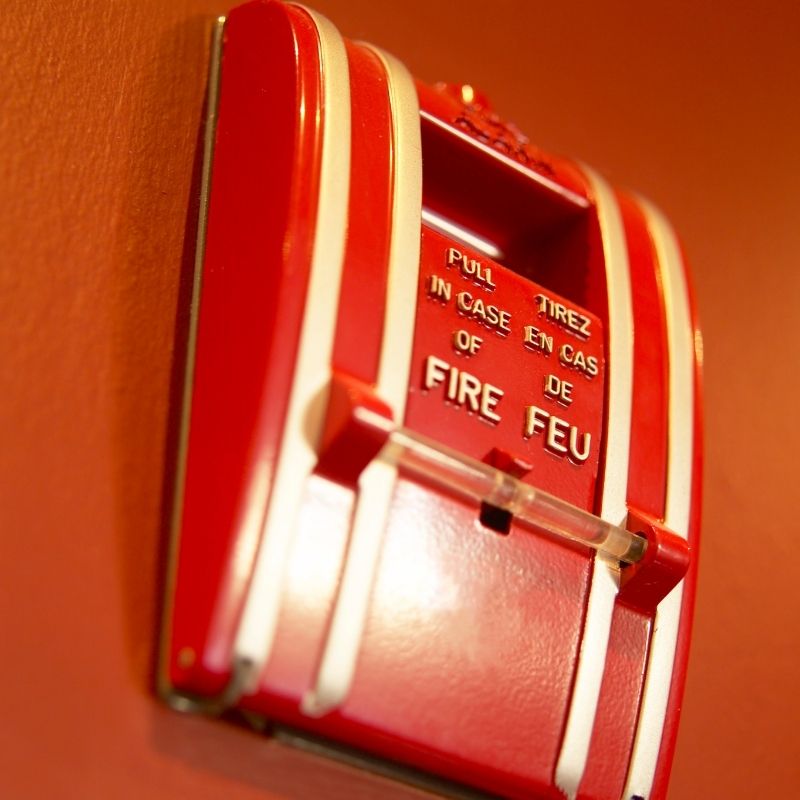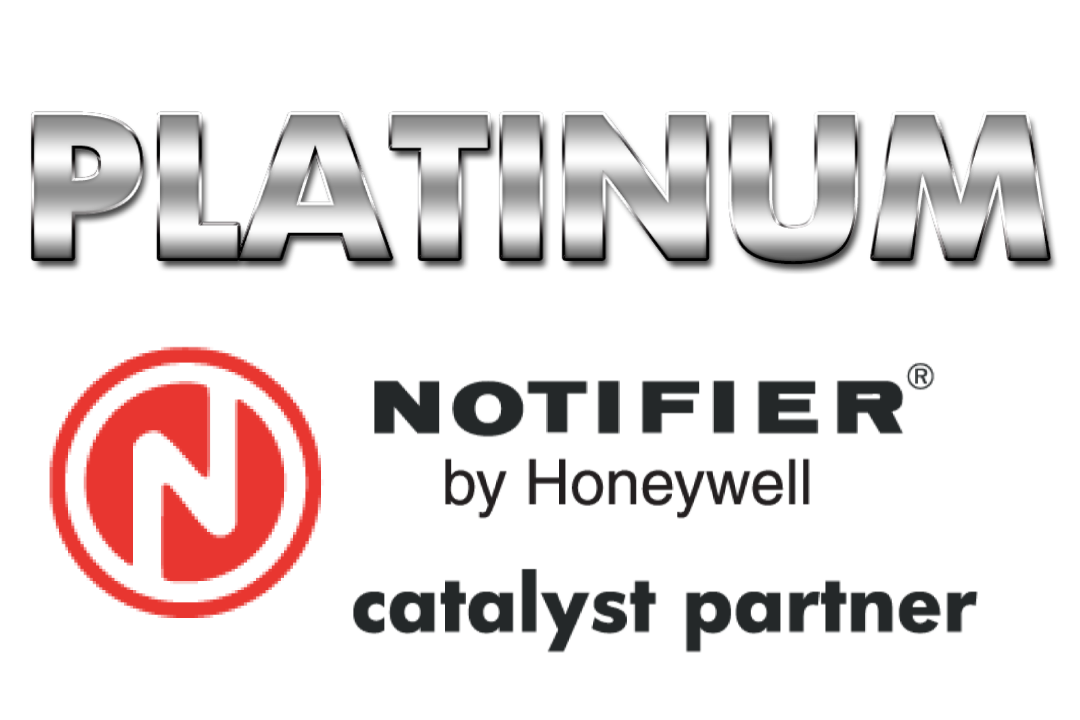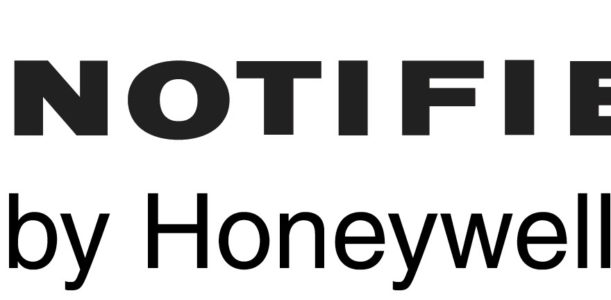
This article was published on 1/4/2017 and updated on 1/25/2022
Each element of the detection, notification, and evacuation systems for any building must conform to all relevant fire safety standards. Only duly Registered Design Professionals (RDP) should prepare and present the plans for installation. Appropriate local authorities must certify the completeness and accuracy of any designs for fire detection systems. The plans must abide by guidelines set by an Authority Having Jurisdiction (AHJ), which may be the local fire authorities.
The fire alarm system design should include every element of the fire alarm system and must meet the standards set by the National Fire Alarm and Signaling Code, NFPA 72. These system plans are to be developed only by fire safety specialists with clear credentials that demonstrate their experience in designing, installing, and testing fire detection and notification systems. The AHJ will verify these credentials before proceeding.
Once the fire alarm system design is approved, the AHJ must be notified prior to any commercial fire alarm installation being performed.
HRSS/SMG Fire Alarm System Design
Fire detection systems, simply put, are developed to detect smoke and potential fire, simultaneously notify occupants and fire emergency services in time to evacuate the facility and allow the fire department personnel to eliminate the threat.
In Chicago, High Rise Security Systems with SMG Security Holdings designs fire detection and notification systems for all types of commercial buildings. The fire alarm designs must meet all local jurisdiction requirements to ensure the safety of all occupants and assets within the building. No building system is as essential as the fire security network. HRSS/SMG works to ensure owners and local authorities that each element is in full compliance with NFPA 72 and all local regulations.
Immediate detection, quick notification and response are the keys to safe and reliable fire alarm system operation.
Shop Drawing Requirements
A fire alarm system designer must address the unique attributes of each building as all structures are different with various challenges. For example, a chemical factory has a different set of criteria and needs than an office building. The fire alarm system for a hospital will be designed differently than for an apartment building.
With so many different types and uses of buildings, plus stacks of regulations that pertain to each situation, the commercial fire alarm installation designer has the responsibility to create the appropriate designs.
The shop drawing is a detailed architectural drawing that will depict wiring schematics, the quantity and placement of fire detection systems, fire warning systems, control panels, annunciators, central monitoring, fire suppression systems (if applicable), and define all evacuation routes.
For the purpose of identification, the schematic should specify the:
- Name of the building
- System Installer/Contractor
- Owner/Occupants
- Location of the building
- Legend designating the types of devices per NFPA 70
- Dates of issue and revisions, if applicable.
Floor Plan
Using CAD, a computer aided design, HRSS/SMG technicians can duplicate the precise floor plan of the building to visualize exactly how many detection devices and notification equipment are needed and where they should be placed. From this exercise, the actual shop drawing of the commercial fire alarm installation may be developed for review by the local authorities.
The schematic of the plan should depict:
- Floor or level designation or number
- Compass direction indicator
- Scale (Standard scale for architecture is 1/8″ = 1 foot. Another scale is possible for smaller or larger buildings, but an accurate scale/proportion key is required.)
- Location of doors, walls, and partitions (if they reach to 90% of the wall height)
- Room dimensions and descriptions of their use
- Fire alarms and all accessory locations
- Location of the primary electric supply
- Areas of central control and various interfaces
- Devices connected to each circuit
- Quantity and types of conduits for each circuit
- Source of air supply and site of air diffusers
NOTIFIER™ by Honeywell Fire Detection and Notification Devices
While many fire detection and alarm systems are available today, NOTIFIER™ by Honeywell produces the most reliable and comprehensive systems available. High Rise Security Systems with SMG Security Holdings, an entirely dedicated fire safety company, is certified to design, test, inspect, maintain, and monitor all phases of the fire safety systems.NOTIFIER™ by Honeywell commercial fire alarms include wireless connectivity between their detection devices, all notification devices, and any exterior monitoring equipment. The various Gateway networks can be set up to communicate instantly with any external communications systems.
NOTIFIER annunciators link with each device in the system to give an immediate assessment to firefighters as they arrive to control the emergency. Notification systems may include prerecorded or live loudspeaker instructions to occupants to evacuate or to proceed to a safe zone. Also, flashing strobe lights and horns add to the notification systems to ensure all occupants are aware of a potential emergency.
Shop Drawing Protocol for Risers
Building risers are channels or pipes built into building walls and floors to direct wiring and cable for the building’s many uses. These are necessary for protecting electrical supply, in this case, for commercial fire alarm installation and fire detection purposes.
For system riser diagrams, designers should verify the following:
- Arrangement of the building in a cross section to identify riser channels
- Show how many risers exist within the structure
- Number of circuits in each channel
- Type and number of fire detection and notification devices on each floor
- Quantity of conductors for each circuit
Control Panel Drawings
Control panels are the heart of fire detection systems. Here all settings are monitored, warnings are received, and the status is sent electronically to all predetermined points, whether to a central monitoring location or a remote, designated agency for rapid response.
The control panel portion of the shop drawings should include:
- Type, model number, and location of the control panel should be clearly defined
- Depict all wiring terminals and circuitry
- Identify circuits connected to remote wiring terminals
- Full text of all labels on manual controls and indicators
- Show all connections to any supervising or monitoring stations and fire safety control interfaces
Annunciator
Included in the shop drawings for most larger structures should be the location and links for the annunciator. This panel must be strategically placed to allow for quick access by emergency fire personnel who then can determine the origin, status, and location of all fire detection and notification devices. Located near an entry location, the annunciator will facilitate the correct response by emergency personnel and direct them to the proper areas of the structure.
Final Approval Process
Installer Verification
After approval of the plan and the installation, the installer must submit a record of completion that attests to the fact that the work has been completed according to specification and tested in accordance with the manufacturer’s specific instructions and NFPA requirements.
Authorities will verify the installer’s qualifications which should include one or more of the following:
- Registered or licensed by a local or state office for installing and testing fire detection systems
- Certified by a certified national fire prevention organization
- Certified that the installer was certified by the manufacturer and has received factory training for the fire alarm system design and emergency communications. The individual must be deemed acceptable by the AHJ according to the standards set by NFPA 72-10.
Security Notification: Dual Duty
Notification alarm systems may also have an access control element to notify occupants of the presence of any unauthorized intruders and other potential dangers. While this is not a design part of the fire notification system, the system can be used for this purpose.
Also, to this end, a central locking and unlocking system may play an important role in fire safety and security systems.
Final Approval
Final approval of the fire detection system is the result of the examination, testing, and certification of the systems by the Authority Having Jurisdiction (AHJ).
Fire Alarm Monitoring Service
Once the building and the fire detection system is commissioned, employing a reputable fire alarm monitoring service is an important step. Hiring the fire safety company that designed and installed the system is by far the best solution since these experts are certified and aware of the locations of every device and how they are connected.
The monitoring service provided by a professional fire safety monitoring service such as HRSS/SMG in Chicago acts as an overseer that monitors, responds to, and maintains the system. Professional, trained personnel will oversee the detection and notification devices and react appropriately to any emergency.
Ongoing Maintenance
High Rise Security Systems, HRSS, with SMG Security Holdings, SMG delivers ongoing maintenance and testing for all fire and smoke detection systems. Over time, these may accumulate dust and grime that, if left unattended, may create malfunctions. HRSS/SMG technicians will clean and retest elements and replace anything that may become worn. Ongoing preventive maintenance will ensure peace of mind that the system will always be working correctly. The intent is to provide building owners with peace of mind that emergencies will be detected in time to allow everyone to evacuate safely if necessary.
HRSS/SMG is a leading fire and life safety system provider with expertise in complete system design to meet all code regulations and provide maximum protection to property and people. Our skilled, licensed, and trained technicians provide routine maintenance, testing, inspection, repairs, and upgrades. Contact us for assistance with your fire and life safety system from the design phase, through installation and ongoing operation for maximum safety and protection.



